MATRIX AUDIO MINI-I PRO 3 streaming preamp/DAC/headamp
+ Multiple easy-to use-functions; very pleasant sound signature; smooth and natural timbre; many connectivity options for both input and output; good build quality; clear and vibrant screen.
– High headphone output impedance; not much else at this price point.
Sound: 9/10
Value: 9/10
MATRIX Audio is a China-based audio company and has been making DACs and headphone amps for headfi-ers since 2006. Starting from humble beginnings, Matrix has worked its way to the top with high-end equipment such as the top-of-the-line DAC/amp, the Element X DAC, and also the Mini-i Pro 3.
The Mini-i Pro 3 was announced last August and released in September. This sleek black box is guaranteed to catch unsuspecting eyes while sounding good doing it.
I’ve managed to be one of the more privileged ones to try them it in my own environment and see the potential this small unit possesses first hand. But first, a bit of a history.
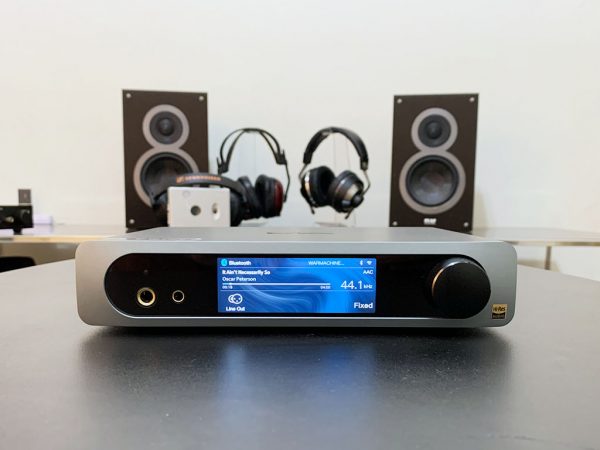
I still own the first-gen Mini-i (non-Pro) DAC/amp which was targeted at headfi-ers instead of hifi-ers. It’s a pretty rudimentary and straightforward device – multiple digital inputs and balanced/unbalanced outputs. To many, this set-up was enough back then, and it’s still enough today. However, as we progress and own a multitude of sources, companies need to adapt to meet consumer demands.
Matrix Audio knew this well and added Bluetooth 4.0 support for its Mini-i Pro 2. With various other internal upgrades on the DAC chipset and amplification section, the Mini-i Pro 2 was widely accepted as an affordable but great upgrade by Matrix.
The first model had gotten some flak over looking too much like Bel Canto, with one friend making the same mistake, so that could’ve been the reason why the second model came in either all silver or all black with a curved face. The Mini-i Pro 3 carries the same design language as the first model – sleek matte black casing and space grey faceplate, while the curved face resembles the second model. The faceplate also comes in black.
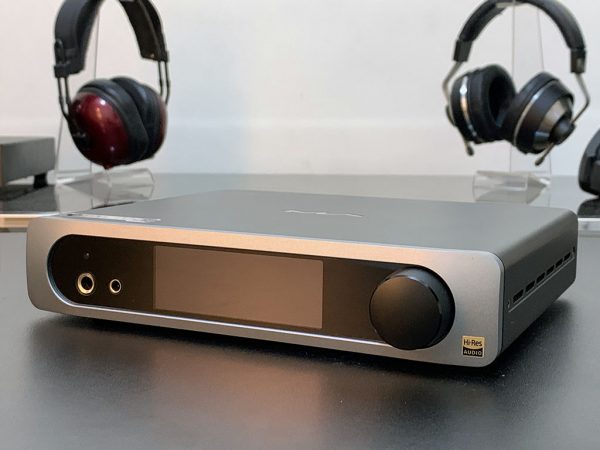
The unit is bundled with a beautiful premium feeling plastic-backed aluminium remote with comfortable silicone buttons. The holes for the buttons are machine chamfered and polished to a mirror finish, I can’t overstate how nice the remote looks.
There are vents on the sides of the Mini-i Pro 3 – more for aesthetics than cooling as the device never gets more than warm. In front, there’s a large push button knob, a vibrant 3.3 inch screen, a quarter-inch headphone jack, and a balanced 4.4mm headphone jack. The back is a lot more festive – you have a choice between coaxial, optical, USB type C, and IIS/LVDS for digital inputs, an RCA in for analogue input, and a wireless antenna that accepts connectivity over wifi and Bluetooth 5.0.
There’s also a LAN socket if you don’t fancy typing in your Wi-Fi password using the volume knob which is cumbersome at best. Being a fully balanced unit, the Mini-i Pro 3 does have a balanced XLR along with its single-ended RCA output. Both analogue outputs can be configured as either fixed or variable. These outputs are disabled when you plug in headphones.
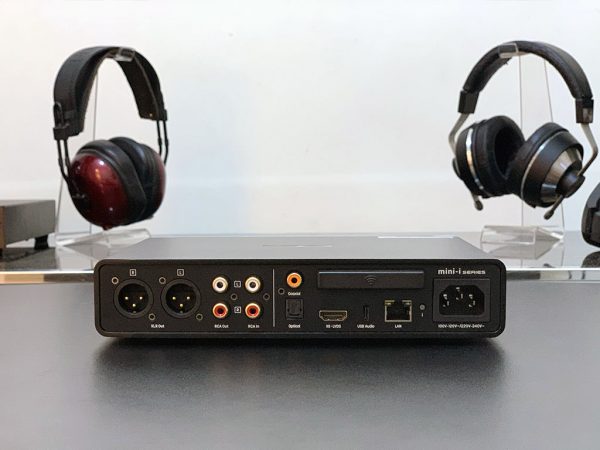
To control all this, the Mini-i Pro 3 utilises a NXP i.MX 6UL – a high performance, ultra-efficient processor featuring an advanced implementation of a single Arm Cortex – A7 core. A reference high performance 32-bit ES9028Q2M Sabre chipset operates the digital-to-analogue conversion and supports up to 32-bit/384kHz PCM and DSD 22.6MHz resolution. The unit also supports full MQA decoding that allows you to play MQA format with no software encoding.
Information about the headphone and line-out analogue hardware is sparse, but the specification is impressive with one caveat – the single-ended headphone out has an output impedance of <11Ω and <22Ω for balanced. Signal-to-noise ratio is >-116dB and >-117dB respectively while both measure a THD of <0.0006%.
With wireless connectivity, it helps if you’re an Apple user as it supports Airplay 2. For other operating systems, you’ll have to make do with Hi-Res Bluetooth 5.0 that supports PCM up to 16-bit/96kHz and all the modern codecs. The Mini-i Pro 3 is also Roon-ready after its recent recertification but unfortunately, without an account, I couldn’t test the feature.
IN CONCERT
I strongly suggest using the unit with a LAN cable as entering your Wi-Fi password is a chore. To access the menu you press the awkwardly placed “i” button at the back of the unit and navigate using the volume knob. Because there’s no other button for navigation, you type in the password using the knob based off the on-screen digital keyboard.
Airplay worked great out of my iPhone XS and the vibrant screen showed the track information as well as the volume level. With Tidal on my laptop via USB, the screen displayed clear bitrate information as well as MQA status for individual tracks – a far more user-friendly way compared to other DAC/amps that settle with changing LED colours and positions.
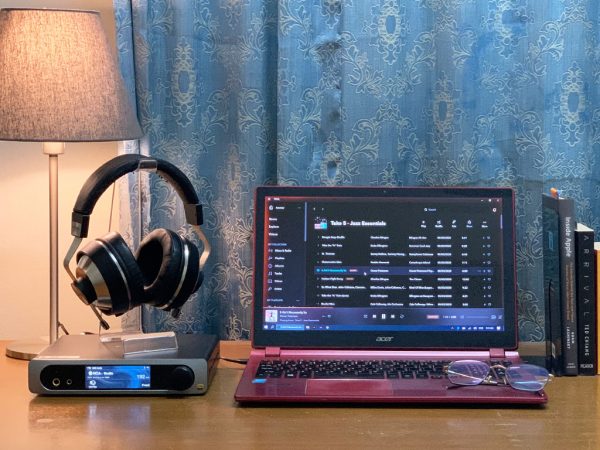
The Mini-i Pro 3 shares tuning with its predecessor, the Mini-i. Upon playback, it felt immediately familiar and comfortable. Big superlative expressions are unnecessary to describe the sound from this little unit – vocals sound clear cut, treble and bass extend well within reason, and the sound signature is just ever so gently warm.
The tonal quality is evenly balanced throughout the frequency response. While the first model has these similar qualities, the Mini-i Pro 3 has bumped up the clarity and transparency to a new level. There’s a preconception that Sabre-based DAC chips would introduce “glare” into the sound, this isn’t the case with the Mini-i Pro 3 as it is smoother than some DACs I’ve tested.
The smoothness is not a setback, not at least to me, because I can spend hours listening to it with zero fatigue while still retaining crystal clarity on my headphones – the Final Audio Pandora Hope VI and the Sennheiser HD525. Volume control is digital and at 0.5dB increments. This allows very precise control over your sound, but changing between high and low sensitivity headphones would mean you have to rotate it quite a bit to adjust.
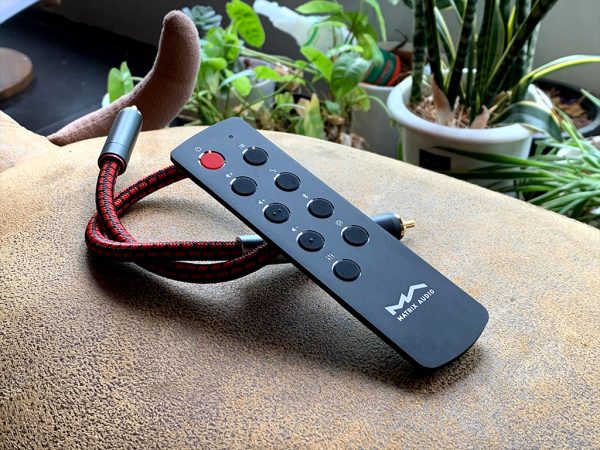
Speaking of headphones, there’s an obvious change in tonality when using the 4.4mm out on my 250Ω HD525. Bass got leaner and the whole presentation got pushed a step back. On paper, it shouldn’t matter much as the headphone impedance is well over eight times higher than the amp’s output impedance, but I found the effect to be noticeable.
Counter-intuitively, my low impedance 8Ω Pandora Hope VI matched well with the Mini-i Pro 3. The headphones have a tendency to be bright, and the bass will get flabby if the amp doesn’t exhibit proper control. Throughout use, my Pandora Hope VI got a first-hand look into the Mini-i Pro 3’s transparency and control.
Switching to its RCA output, I paired the unit with my PassDIY Whammy headphone amp. The Whammy is relatively uncoloured but it is a slight step-up compared with the Mini-i Pro 3’s headphone section. The Mini-i Pro 3 needs to be cranked up to -8.0dB in order to drive a pair of MrSpeakers Alpha Dogs headphones so the larger headroom on the Whammy is welcomed.

The headphone section on the Mini-i Pro 3 is uncoloured as the Whammy yields the same familiar signature as Mini-i Pro 3. As a pure USB DAC, the impression stays the same – the Matrix is transparent, smooth, and detailed.
I hooked the unit up to my humble stereo and tested the analogue input with my Pro-ject RPM6.1 SB turntable fitted with an Audio Technica AT-51 cartridge and a generic TCC TC750 transistor-based phono preamp. With the Mini-i Pro 3 working as a preamp into my power amp, I found it smoother than the Whammy it replaced while maintaining good resolution.
With the phono stage being the bottleneck in this set-up, I couldn’t comment on the resolution of its analogue stage – so the next logical step for me would be to hook it up to my Chord Hugo DAC.
As a preamp and headphone amp, the Mini-i Pro 3 is reasonably capable in resolving minute details and nuances in the music when fed from a high quality source. I do miss out on the technical ability that my Whammy can offer but it is only noticeable during comparisons so the Mini-i Pro 3 is no slouch.
THE LAST WORD
The Matrix Audio Mini-i Pro 3 is a very good unit, and I can say this with no reservations. For an all-in-one wireless streamer at this price point, it can hang around with the big boys, no problem. If you don’t need the Wi-Fi connectivity, MQ, and Roon, the non-Pro version can be had for a lot less money.
I couldn’t find fault throughout the time I tested the Mini-i Pro 3. The sound is natural and inoffensive, the set-up is fairly simple, and it can be integrated into your system as a streamer quickly. The RCA input is a bonus if you’re starting out without a preamp in your stereo set-up. It almost feels like the Matrix Audio Mini-i Pro 3 has everything but the kitchen sink.
Gear
Sources: Acer Aspire V5 573PG, iPhone XS / Turntable: Pro-Ject RPM6.1 SB / DAC: Chord Hugo V1, Matrix Audio Mini-i / Headphone Amp: PassDIY Whammy / Headphones: Final Audio Pandora Hope VI, Sennheiser HD525, MrSpeakers Alpha Dogs
Price: US$1,025
Malaysian price: RM4,130
Malaysian distributor: STARS PICKER AUDIO LIBRARY (+603-6156 1984) / Find your distributor.
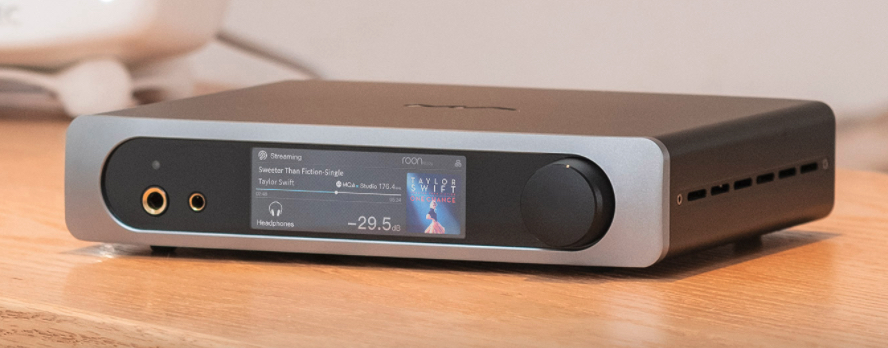





The device in question seems very well kitted out for such a compact chassis. On the published photo of the back apron of the unit, there seems to be a HDMI digital input which would most likely be used for DSD streams in lieu of using the USB input for similar purposes. I hope you got a chance to listen to some proper DSD files off this promising DAC. Thanks again for the wonderful review and I look forward to reading more of such head-fi oriented equipment in the coming future.
este DAC tiene buenos graves que ofrecer, las salidas XLR son realmente nativas y Valanceadas. y lleva un PREAMPLIFICADOR para ser incorporado a una etapa de potencia sin problemas…pregunto por si alguien me puede contestar de inmediato a estas preguntas…